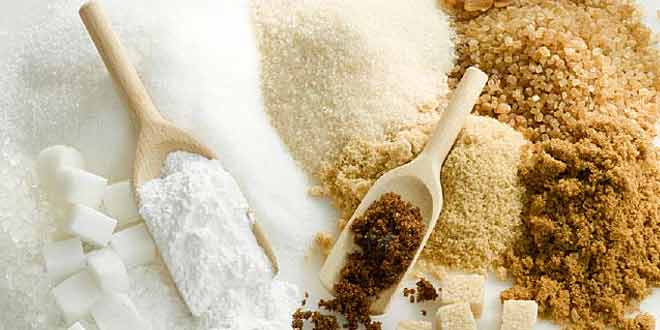
How to differentiate between sugar and sweeteners?
Sugar is everywhere, and can sometimes be found where least expected. With so many forms of sugar out there, it’s not easy to differentiate between healthy sugars, like natural fructose found in fruit or honey, and the synthetic glucose-fructose syrup, made from corn starch, often found in industrially made food products. Although corn syrup doesn’t raise blood sugar levels too much, it can still be stored as fat in the body. Sucrose, or white sugar, should be ruled out for dieters, as it sends blood sugar levels rocketing. It’s better to opt for natural sweeteners, which can be just as sweet as white sugar but with fewer calories ― sometimes none at all.
Agave syrup, 310 calories per 100g
This sap of a Mexican cactus is sweeter than white sugar. Its glycemic index (15) is much lower than that of honey, which helps prevent spikes in insulin levels. Agave syrup is composed essentially of fructose, a sugar that’s also found in fruit. Nevertheless, it still contains 310 calories per 100g.
Maple syrup, 260 calories per 100g
This syrup is made by boiling the sap of the maple tree. It’s 1.4 times sweeter than white sugar and it’s rich in vitamin B, proteins, and minerals like zinc, calcium, potassium and manganese. Although maple syrup’s glycemic index (65) is lower than sugar (70), it’s still wise to go easy, as it contains 260 calories per 100g.
Birch xylitol, 240 calories per 100g
Birch xylitol, which originates from Finland and is available in organic stores, is a dieter’s friend. With half the calories of sugar, it can be used to sweeten all kinds of foods. It can be used in baking too, but quantities will need to be reduced by around 40 per cent, as its sweetness increases when heated. Birch Xylitol is often used in “sugar-free” products like chewing gum, for example.
Sukrin, 0 calories
Used in Japan since 1990 and available in the USA since 1997, Sukrin was authorised for use in Europe following a 2006 directive. This 100 per cent natural product has zero glycemic index and zero calories. It’s made by a fermentation process leading to the crystallisation of glucose, giving it the same structure and appearance as sugar. It’s not always easy to find in regular stores, but it can usually be ordered online.
Monk fruit, 0 calories
This small oval fruit (“Luo Han Guo” in Chinese) is a cross between an apple and a kiwi, and can be turned into an extract with a sweet taste but no calories. Grown in southern China and northern Thailand, it’s used in Chinese traditional medicine for treating diabetes and obesity, as well as inflammatory conditions, colds and sore throats. Currently only marketed in the USA, it has been identified by several brands for its potential as a sweetener, since it’s 300 times sweeter than sugar and contains zero calories.
Stevia, 0 calories
Stevia is a plant-based sweetener sold in powder or liquid form. It’s 100 to 300 times sweeter than white sugar, and is suitable for diabetes and hypoglycemia diets thanks to its minimal effect on blood sugar levels and zero calorie content. It’s an ideal sweetener for hot drinks.
Source: AFP-Relaxnews

